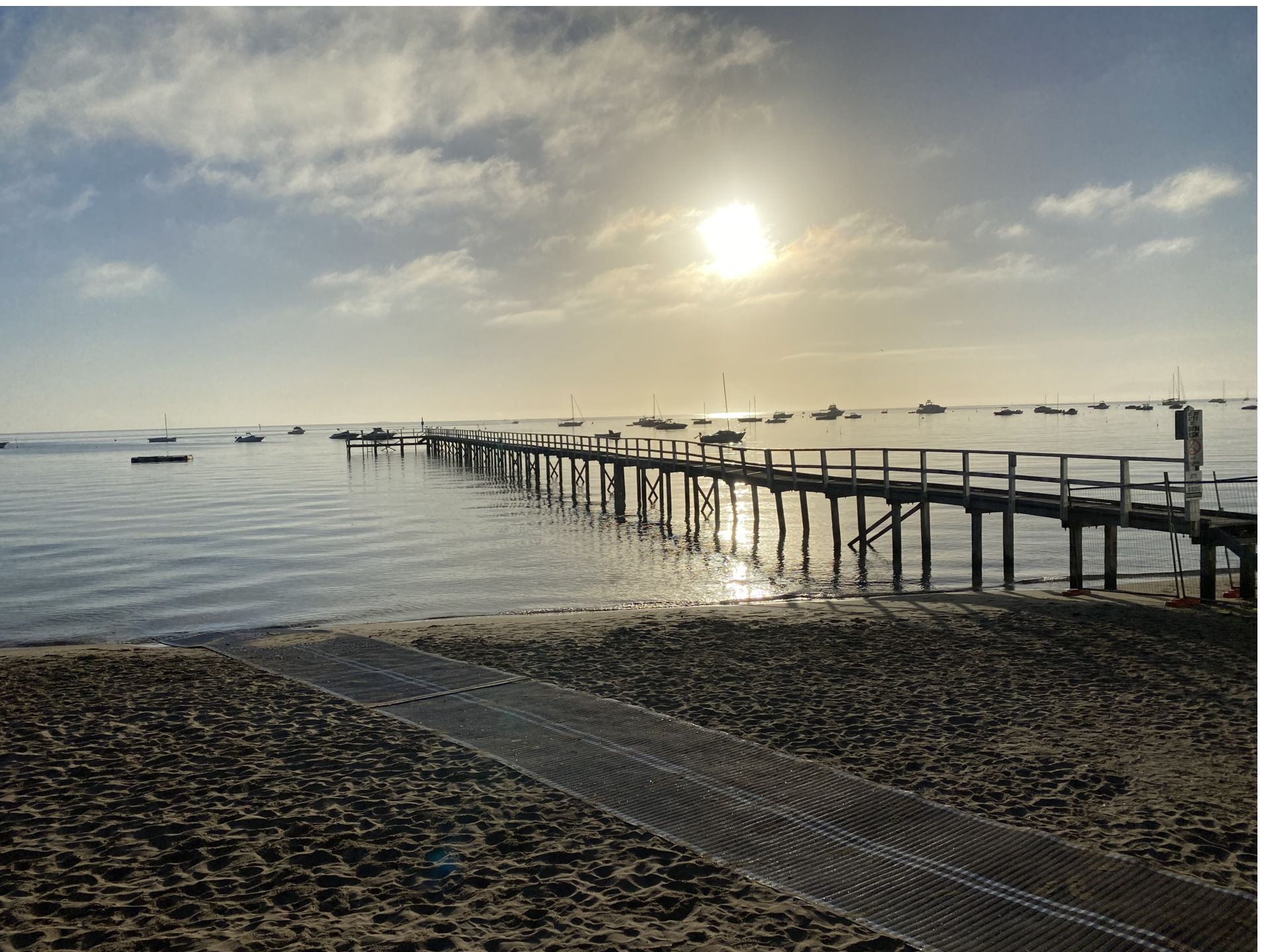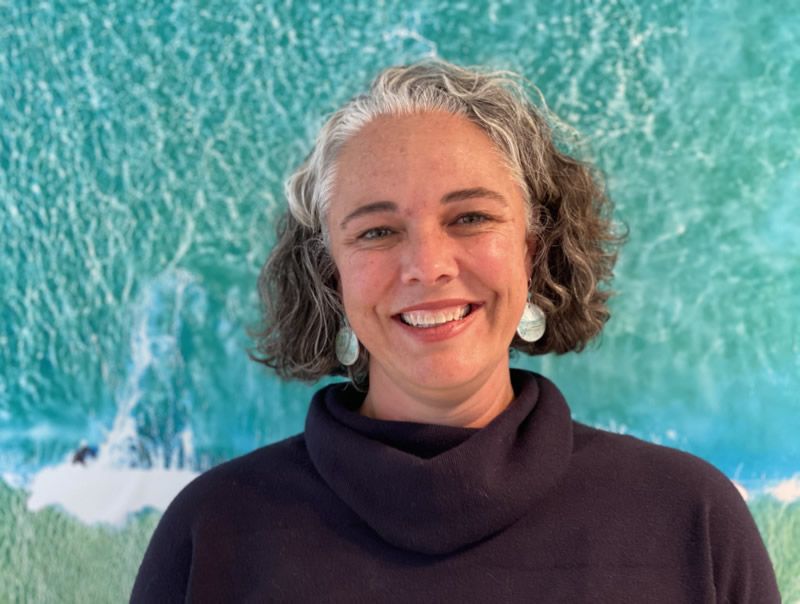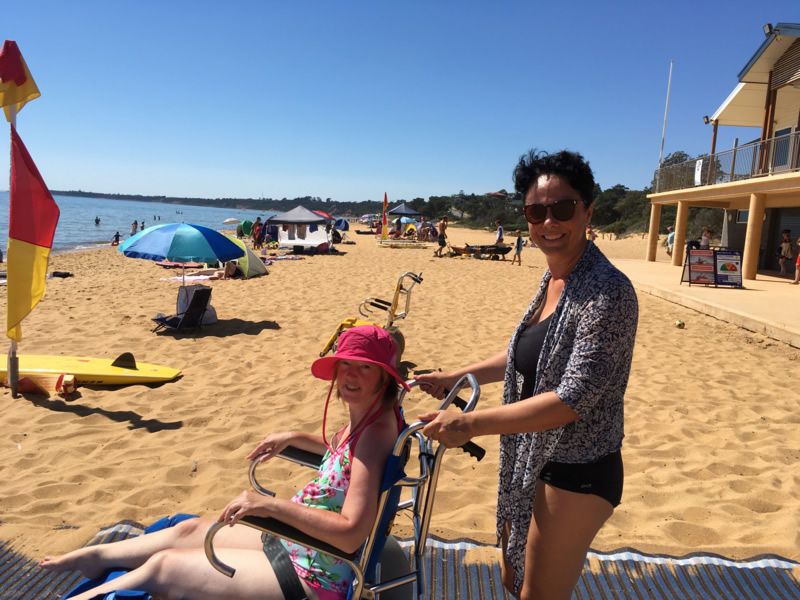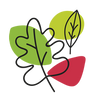Conversation II
Or, talking inclusion and universal design with changemaker, Virginia Richardson.

Virginia Richardson is a changemaker through and through. I’ve had the pleasure of knowing her and working with her on and off since 2015. She’s the personification of inclusion – she gets it theoretically and she puts it into practice too. She currently works in Disability Inclusion at the Mornington Peninsula Shire and she has a special interest in universal design. I thought I’d pick her brains so that I could share some of her wisdom with you!
If you’ve not heard of universal design before, this is the process of designing for everyone – including people of different ages, sizes and abilities – so that a product, service or built environment is inclusive and, well, just better.

-----------------

Hi Virginia. Can you please tell me about your background and how you came to work at the Mornington Peninsula Shire?
I grew up in a small town in New Zealand during the 80s, in what was then to me an extremely uncool family, with two mums and three sisters (two of them step). My mum was a teacher who specialised in disability, and her partner was a social worker. I remember feeling like a complete outcast at school because we were very different from your average family, and kids used to tease us for being ‘lesbians’. This was a word I’d never heard before until it was used as an insult by some mean girls at school.
At home, however, we met a lot of diverse people who also didn’t fit the ‘norm’ – other gay, lesbian and transgender people, older people who were activists, kids with disabilities and their parents, artists, academics and other ‘misfits’ – who would sit in our lounge room and discuss all sorts of interesting things with my mothers.
At the time I wished I could be part of a ‘normal’ family with a mum and a dad and nothing embarrassing going on, but looking back I feel incredibly lucky to have had this start in life. It made me realise that being different isn’t a bad thing – in fact, it’s pretty cool – and by limiting who we love or have as friends, we limit our own experience of life.
Before I started working at the Mornington Peninsula Shire, I had a lot of different jobs including health promotion, horticulture, hospitality, environmental activism and writing. I did a BA in Sociology and, in around 2003, I remember meeting a woman who worked for the Shire in Social Planning. Her name was Jenny McCaffer and she wrote an amazing plan for the community called Health, Hope and Happiness. I thought “Wow! There are people who actually think about society in this way and try to find solutions!” I was just in awe of Jenny’s work and knew I’d like to do something similar, but it felt like a distant dream back then.
I spent four years at Peninsula Health in the health promotion team, working on a variety of projects including setting up Men’s Sheds and community gardens. A job came up in the Social Planning team at the Shire, so I applied and was really excited to get it. I still remember sitting in my first team meeting with Jenny McCaffer and literally pinching myself because my dream from 10 years ago had come true. Now I've been here for nearly 10 years! And I still love it.
What inspired you to follow the pathway into universal design?
I first heard of universal design at Camp Manyung in Mt Eliza. In 2014, they designed a high ropes course that could be used by people in wheelchairs, people who were vision impaired, young, old – everyone! A few people had been champions of inclusion to make this happen and it really inspired me.
Then in 2016, I attended the Universal Design Conference in Sydney. We were given a guided tour of the Sydney Opera House and saw all the amazing changes they’d made to improve access in that venue. I learned about universal design in everything from housing to toilets and fashion to tourism, and after that I constantly asked myself “Why isn’t EVERYTHING universally designed?”.
In 2018, I took two members of our Disability Advisory Committee (DAC) to the Universal Design Conference in Brisbane, and in 2021 I was lucky enough to deliver my own workshop at the Melbourne conference, and speak on the final panel.
I think what I like about universal design is that it’s about everyone being considered and included.
It frustrates me when people tell me they can’t access a building or join a group because of the way it’s designed. Involving feedback from people with different lived experience is seen as hard and time-consuming, but if we design well from the beginning, we reduce the need to retrofit and it means that everyone feels welcome and comfortable.
Can you please tell us about the Universal Design Network and what you hope to achieve?
In March 2020, I started the Local Government Universal Design Network (LGUDN, or el’good’n as some people have dubbed it) because I wanted to know what other local governments were doing in this space. I had a suspicion that only a handful of councils had made a lot of progress, for example Hobson’s Bay, Cardinia, Brisbane and the Gold Coast. I asked for expressions of interest to get a sense of where councils were at and what they wanted to know about. We’re up to about 100 members now, from councils across Australia and New Zealand. I run meetings online every three months, usually with a guest speaker who talks about their work or ideas, followed by some general questions and answers.
In June this year, we had a very special guest Jane Bringholf, who founded the Centre for Universal Design Australia and is responsible for the bi-annual Universal Design Conferences that I started attending in 2016. Jane gave us an overview of how universal design has evolved over the past few decades and this was really a great introduction for people who are new to the concept. I post the recordings of these meetings on an LGUDN group that I set up on LinkedIn
Diversity and inclusion can sometimes seem like buzzwords or things we just have to do. Can you please give us an example of when you’ve seen real inclusion or real diversity, or both, happen in real life?
Perhaps in the corporate and HR space they’ve become buzzwords, but at the local government level I think those words still have meaning because we’re dealing closely with local communities and real people, which is why I enjoy what I do so much.
I’ve seen a lot of examples of inclusion and it pretty much all comes down to attitudes. For example, the Mt Martha Lifesaving Club embraced universal design and disability access without hesitation. They now have beach matting and beach wheelchairs, and an inclusive starfish nippers program for children with disabilities. For some reason, their members just ‘got it’ and have all been amazing at accepting the fact that some people need extra support to get to the beach, and if they can help with that, they just do it. Mt Martha really shines as an exceptionally inclusive club.

Is there anyone you admire who is making our world more inclusive?
I couldn’t do what I do without my amazing Disability Advisory Committee (DAC). And, in particular, Karen Fankhauser. Karen has been a member of the DAC since we set it up in 2014 and she’s been the chair for the last four years. In that time, I’ve seen her grow in confidence and expertise to become a formidable inclusion advocate and disability champion. She was recently also a member of the Victorian Disability Advisory Council (VDAC).
Karen has played a huge role in changing the attitudes of staff at the Shire who have attended DAC meetings. She’s shown them that people with disabilities are people too (duh!), and deserve to have the same access to opportunities, services and facilities as everybody else. It might sound strange, but I think part of her power is in her ‘ordinariness’. She’s relatable, and she’s just trying to live her life, but all these barriers and stereotypes are in the way so she calls them out. Karen is far from ordinary, but I think because she’s so articulate, genuine and relatable she really cuts through to people who might not have thought about the fact that they could easily be where she is, and it makes them pause and consider that.
Molly Burke is a speaker, digital creator, author and advocate. She said: “The disability community is the only minority group that anybody can join at any time in their life.”
So what are you going to do next?
That’s a great question! The State government has just released the first-ever State Universal Design Policy which is hugely exciting, so I feel like I might have backed the right horse! I've got heaps to get on with to implement our Universal Design Policy in the Shire, so unless someone taps me on the shoulder and offers me something really tempting I think I’ll keep running with the work I’m doing for a while, and then maybe travel the country and help other councils to develop their own policies and plans. I’d love to continue this work in very practical ways in as many areas as possible. The way I figure out my next move is to check in with myself and see if something feels right. If it does, I keep going. If it doesn’t, I do something else.

